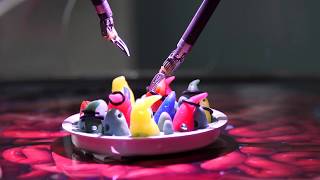About MISTIC
MISTIC was previously the lab space of Dr. Alfred Blalock and Vivien Thomas, L.L.D. in The Johns Hopkins Hospital. Both surgical luminaries used the space as their lab until 1965. Thomas was the director of the center until his retirement in 1979 (15 years after Blalock's passing). Since then the center has continued to be used as a surgical training and laboratory space for decades.
In 2002, the space was renovated and re-dedicated as the Minimally Invasive Surgery Training and Innovation Center. The space is about 9,000 square feet and now houses the training and innovation resources for surgery and interventional training.
#TomorrowsDiscoveries: The Future of Surgeons
Dr. Gina Adrales’ research brings together surgeons, educators and engineers to coach residents and practicing surgeons along a path to perfection.
The center is located in the Johns Hopkins Alfred Blalock Building at The Johns Hopkins Hospital and features:
- Trained certified proctors
- Virtual reality endoscopic, laparospic and robotic simulators
- Hybrid endosurgical training systems
- Advanced fixed and mobile teleconferencing and telesurgical capabilities
- A fully equipped lab for open, laparoscopic and robotic procedures
- A simulated operating room
- A robotic surgery training center with da Vinci Xi, X,Si and SP robots that have procedural simulators, dual consoles, vision and patient carts
- A dry simulation lab and a wet training lab
Mission / Vision
The mission of MISTIC is to improve the health of the community and the world by:
- Delivering superb education and training for medical students, residents, scientists, surgeons and healthcare providers in a safe learning environment
- Partnering with industry and community groups to advance healthcare and public health initiatives
- Driving innovation in patient-centered clinical care and supporting interdisciplinary research
- Helping to attract the best and brightest
- Serving as a sought after resource to thought leaders and others who look to engage in surgery
We will achieve this by:
- Providing unique training opportunities and methodologies employed in surgery and making them available to other learner groups
- Providing accredited learning opportunities through FLS (Fundamentals of Laparoscopic Surgery), FES (Fundamentals of Endoscopic Surgery), JHFRS (Johns Hopkins Fundamentals of Robotic Surgery), and ATOM (Advanced Trauma Operative Management), for which we host the regional provider
- Providing resources to researchers and/or innovators to achieve their goals through the use of MISTIC resources and services
- Providing tailored learning experiences and or events to clinical industry partners/companies learning about clinical context so they can better meet their sales, marketing, goals, and R&D goals
- Providing an engaging setting for students and community based programs
- Providing guidance to advance the department of surgery’s continuing efforts to enhance the domain of robotic training though credentialing, MOC (Maintenance of Certification), use and deployment of regional, national, and global collaborative efforts
History
- The space at MISTIC continues a tradition of innovation at Johns Hopkins. The Center was previously the laboratory of Dr. Alfred Blalock (1899-1964)
- Dr. Blalock earned his M.D. from Johns Hopkins in 1922 and then returned in 1941 after training and a distinguished research career in hemorrhagic and traumatic shock and pulmonary hypertension
- Dr. Blalock served dual appointments as Surgeon-in-Chief and Professor, and Director of the Department of Surgery until his retirement in 1964
- He is most famous for his successful and innovative surgical treatment of Tetralogy of Fallot. Babies and children with this condition were called “blue babies” because of their blue-tinged skin. He developed the first Blue Baby operation, which went on to prove heart surgery was possible in children
- Notably, Vivien T. Thomas, L.L.D., the trusted surgical research technician, is recognized for having worked indispensably in partnership with Dr. Blalock to develop the procedure

